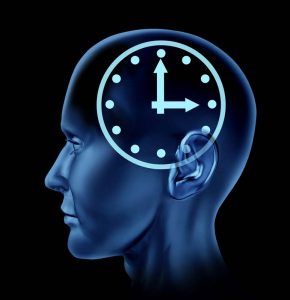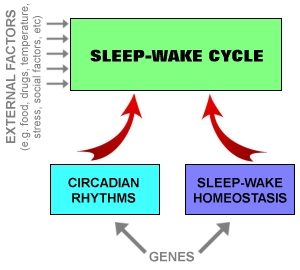The accumulation of sleep-enhancing substances within the brain that cause a homeostatic sleep drive.
2. Circadian Rhythm (Process C)
The regulation regarding the alertness levels and internal processes, which includes the circadian drive for both alerting and arousal that’s managed by the circadian clock in the body. Each of these key processes is influenced somewhat by an individual’s genes. Furthermore, a number of external factors including exercise, eating, stress, naps, drugs, alarm clocks, daily schedules, ambient temperature, etc. can all have either an indirect or direct effect on a person’s sleep-wake cycle. But, a recent discovery made by Dr. Ravi Allada from Northwestern University reveals the science behind this cycle as well as its implications.
Sleep-Wake Cycle Discovered
After more than a decade, one expert circadian rhythm researcher at Northwestern University, Dr. Ravi Allada, along with his colleagues have finally discovered the method behind how the organic clock of an animal puts it to sleep and wakes it up.
It turns out that the clock’s mechanism works the same as a basic light switch. While studying brain circadian neurons that control the everyday timing of the sleep-wake cycle, Dr. Allada and his team discovered that high amounts of sodium channel activity (fast channels that enable sodium ions to travel) concerning these special neurons turn the cells on during the day to waken the animal, while high amounts of potassium channel activity (slower channels that allow potassium ions to travel) turn them off at night, enabling the animal to rest. With a bit more investigative research, the team was shocked to find the same sleep-wake device in both mice and flies.
The Bicycle Method

What’s even more amazing is the fact that they found the exact same method for sleep-wake cycles in both a mammal and an insect. Although flies are diurnal (active during the day) and mice are nocturnal (active at night) in nature, both their sleep-wake cycles work the same way overall.
Dr. Allada and his team conclude that there’s a great deal more work that needs to be done since there are many more questions to be answered concerning what’s actually controlling the sleep-wake pathway.
What This New Research Means
In the field of chronobiology, this newly discovered research suggests that the underlying method that controls the sleep-wake cycle is, in fact, ancient. The oscillation device appears to be preserved across millions of years with regards to evolution. Dr. Allada claims that if this is true in mice, then it’s almost certain to be true in humans as well.
A deeper and better understanding of the device will likely lead to new drugs that address various sleep-wake issues in people such as shift work, jet lag and other clock-related problems. In time, it might just be possible to reset an individual’s internal clock in order to accommodate their unique situation or even work schedule.








